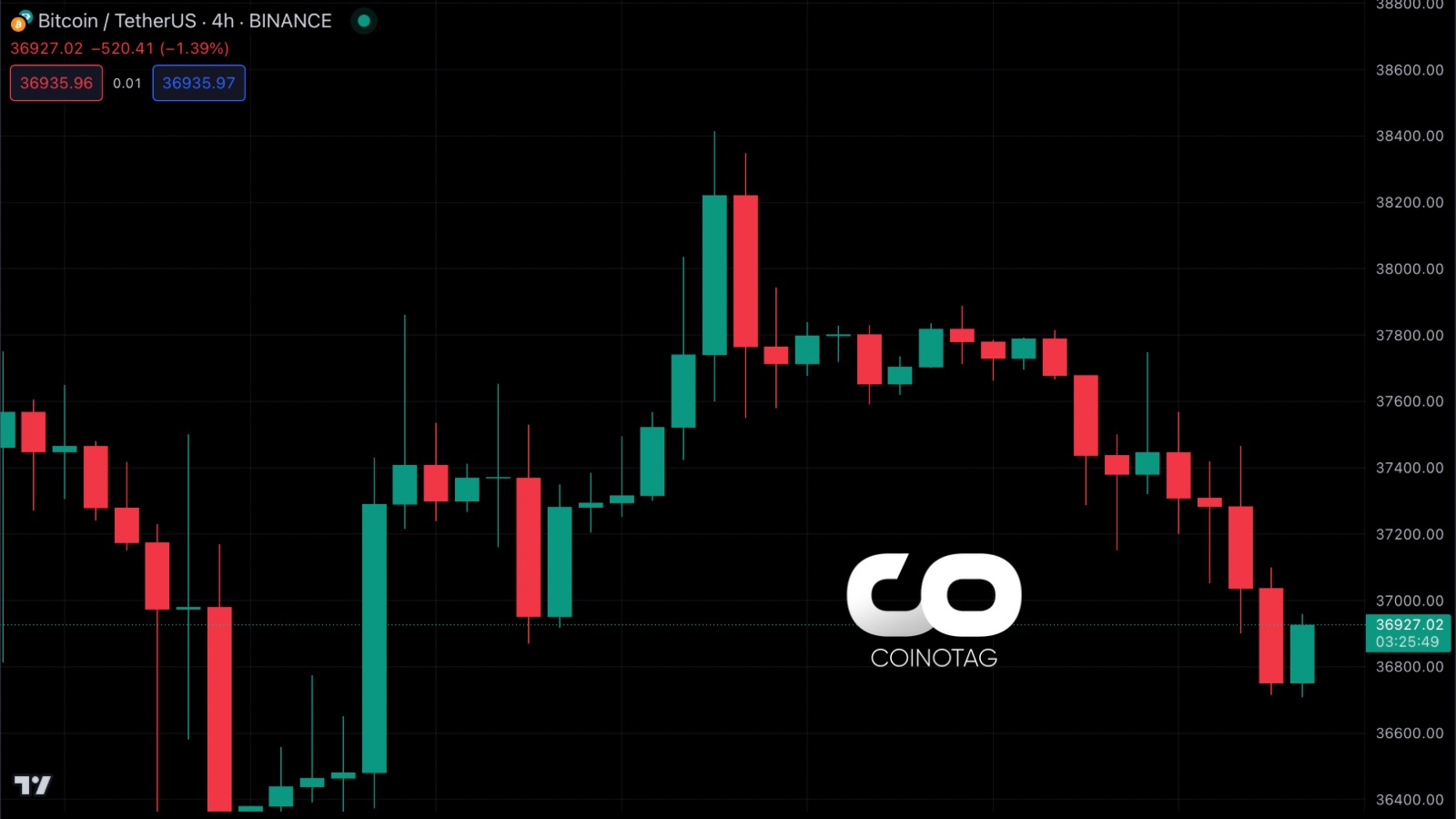- Bitcoin experiences a 2% drop, falling below $37,000 as US stocks show early declines.
- Market analysts foresee short-term downward pressure on Bitcoin due to global economic factors.
- ETC Group’s Head of Research points to potential bullish factors for Bitcoin in 2024.
This article explores the recent dip in Bitcoin’s price in relation to the US stock market’s performance, analyzing the potential short-term impacts and future bullish prospects for the cryptocurrency.
Correlation with US Stock Market Leads to Bitcoin’s Price Dip
Bitcoin has started the week with a notable decline, dropping almost 2% and slipping below the $37,000 mark. This dip coincides with a downturn in the US stock market, as observed in the early-day trading performances of the Dow Jones, S&P 500, and Nasdaq. Analysts suggest that Bitcoin’s recent price movement is reflecting trends in traditional financial markets, a reversal from the patterns seen in the previous month.
Investor Caution and Short-Term Market Trends
According to André Dragosch, Head of Research at ETC Group, the current downturn in traditional markets, following recent gains, could lead to profit-taking by cautious investors. This, in turn, may exert short-term downward pressure on Bitcoin. Dragosch highlights the significance of ‘buyer exhaustion’ in the current market dynamics, pointing out the high levels of global ETP flows and the relative underexposure of global crypto hedge funds based on their recent performance sensitivity to Bitcoin.
Looking Ahead: Bullish Factors for Bitcoin in 2024
Despite the short-term pullback, Dragosch remains optimistic about Bitcoin’s prospects in 2024. He cites a confluence of bullish on-chain and macro factors, including likely spot ETF approvals, the upcoming Bitcoin halving, and potential changes in the U.S. monetary policy amidst a recession. These factors could collectively drive a bullish trend for Bitcoin in the coming years.
Conclusion
Bitcoin’s current price dip, in line with the US stock market’s pullback, points to a closely intertwined relationship between cryptocurrency and traditional financial markets. While short-term challenges are evident, analysts like Dragosch highlight significant bullish factors on the horizon, especially for 2024. As the market continues to evolve, Bitcoin remains a key asset to watch, both for its immediate reactions to global economic trends and its long-term potential.








